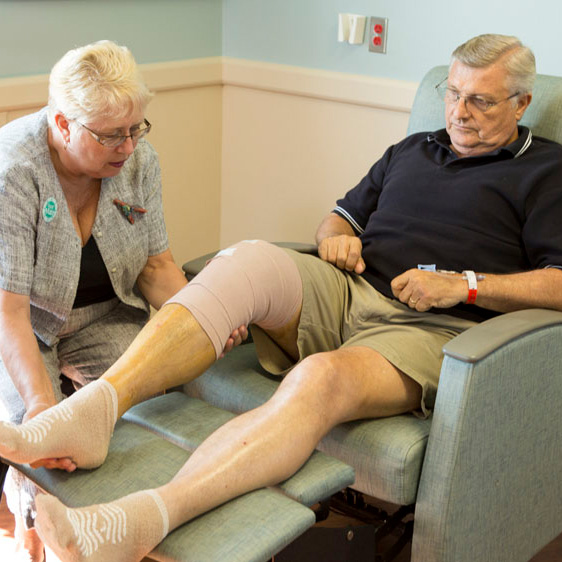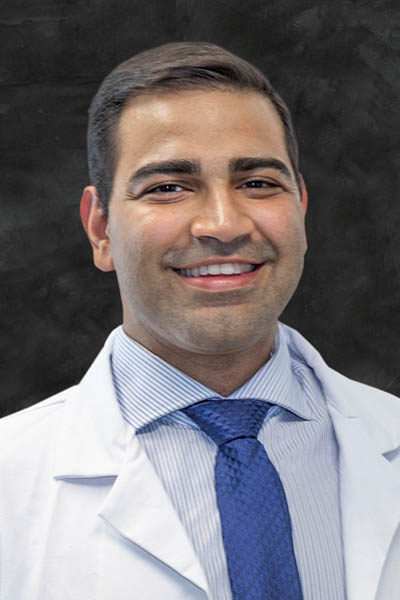Surgery Coming Up?
January 1, 2021
Here’s How to Speed — and Impede — Your Recovery
Elective surgery? The term, when you think about it, is a little misleading. You don’t really elect surgery. Who would? You just see it as your best option for fixing something that needs fixing — not urgently, at your convenience.
That said, if you’re scheduled for elective surgery of any kind, you probably want the procedure behind you as quickly as possible — and the same goes for the recovery period.
How long till you’re back to your old self? The answer depends mostly on the kind of surgery you have. Recovering from cataract removal is one thing. Recovering from coronary bypass is another thing entirely. As a general rule, though, expect to bounce back faster from outpatient surgery (same-day discharge) than from inpatient (hospital admission).
But do keep in mind that whatever the surgery, there are ways to step up your recovery — and ways to slow it down — once you’re home. Here are a few of each.
DO — These will speed your recovery.
- Follow doctor’s orders. You may think they are unnecessary or don’t apply to you — but you’d be wrong. You’ve likely had your procedure only once; your doctor has performed it many times. He or she knows the postsurgical pitfalls and how to avoid them. So read your discharge instructions carefully and follow them to the letter. Regardless of how good you feel, remember that internal healing takes time. For everyone.
- Control pain. Acute pain prevents you from moving around — which lowers the risk of post-surgical complications like blood clots and pneumonia — and from sleeping. For joint replacement surgery, people should apply only cold/ice to the affected body part, keeping it elevated and using deep breathing techniques. As for pain medication, Tylenol may well do the trick. If not, a short course of a stronger medication can enable you to engage in modest activity and rest, both of which are essential to healing. (In this as in all matters related to your recovery, let your doctor be your guide.)
- Take care of your incision. Keep it clean and dry, check it daily for signs of infection (redness, swelling, foul odor) and apply dressings as directed.
- Eat healthy. After surgery, some medications prescribed for pain control (narcotics) and infection prevention (antibiotics) can cause nausea or constipation. You may not feel like eating while taking them. But eating helps you regain strength, and certain foods, such as egg whites, fish, chicken, almonds, walnuts, brown rice and vitamin C-rich fruits, can boost your immune system and hasten wound healing as well. Drink plenty of water, too. It’s important to stay hydrated.
- Get moving. Bed rest is good — up to a point. You lose stamina and muscle mass quickly when confined to bed. Aim to get up at least two or three times a day and take a short walk, either outside or around the house, at a pace that’s comfortable for you. Regular walking builds both endurance and a sense of well-being.
- Stay connected. Visits from family members and friends — and outings when you’re ready — take your mind off your troubles, boosting mood and helping prevent depression, which is common after certain surgeries.
- Reduce stress. Listen to music, meditate or, when you’re up to it, take up yoga.
- Keep follow-up appointments. You may be feeling fine, but if your doctor wants to see you after surgery, know there’s a reason — and don’t skip your follow-up. He or she may need to monitor internal healing, order bloodwork or adjust medications.
DON’T — These things hinder recovery.
- Smoke. Smoking negatively affects circulation and wound healing. It actively works against your recovery, extending it by days, weeks or even months.
- Overdo it. Doing too much too soon can easily result in relapse. This includes driving or returning to work before you’re ready. Remember to pace yourself.
- Consume sports drinks or sugar-laden foods. High in sodium, sports drinks can cause water retention and prolong swelling at the incision site and elsewhere, while sugary foods can increase fluctuations in blood glucose levels that trigger fatigue.
Special Cases
These do’s and don’ts are general guidelines, applicable to surgical recoveries pretty much across the board. To ensure a smooth recovery from the three commonly performed surgeries below, however, you may find a few additional suggestions helpful.
Hip or knee replacement
Recovery from hip or knee replacement typically begins before surgery with prehabilitation, or prehab. At the Beaufort Memorial Joint Replacement Center, for example, several weeks of targeted exercises are prescribed to strengthen surrounding muscles and prepare you for the post-surgical rehab that begins almost immediately after your procedure and is essential to establishing joint stability and range of motion.
"A positive attitude is the No. 1 predictor of a successful outcome for joint replacement patients," says Dr. Vandit Sardana, a board-certified, fellowship-trained orthopedic surgeon at Beaufort Memorial Orthopaedic Specialists. "Key, too, are following instructions (sound familiar?) and being informed — that is, knowing what to expect at each stage of recovery."
Being informed is a given for Joint Replacement Center patients, who receive a comprehensive guide on joint replacement and, together with their “first mates” and a few fellow travelers, attend an information session or watch a video taught by the center’s orthopedic care coordinator. Hallmarks of aerobic fitness, a strong heart and strong lungs are desirable under any circumstances.
“Patients who maintain an exercise program before surgery have a bit of an edge” in recovery, says Dr. Sardana. The right diet is important as well. “The American diet is prohibitively high in carbs. Decreasing carb intake both pre- and post-surgery can help prevent wound-healing problems."
Hysterectomy
 Recovery from hysterectomy — the removal of the uterus and sometimes also the cervix, ovaries and fallopian tubes — varies according to the surgical procedure used. Abdominal hysterectomy involves a larger incision and lengthy recovery: as long as two months. By contrast, recovery from vaginal hysterectomy, laparoscopic-assisted hysterectomy and total laparoscopic hysterectomy, all of which require only small incisions, is far shorter: two weeks or less.
Recovery from hysterectomy — the removal of the uterus and sometimes also the cervix, ovaries and fallopian tubes — varies according to the surgical procedure used. Abdominal hysterectomy involves a larger incision and lengthy recovery: as long as two months. By contrast, recovery from vaginal hysterectomy, laparoscopic-assisted hysterectomy and total laparoscopic hysterectomy, all of which require only small incisions, is far shorter: two weeks or less.
Whichever type of procedure you have, no driving for two weeks and no heavy lifting (objects weighing more than eight pounds), no sexual activity and no baths (showers only!) for six weeks. Avoid major core exercises that could add abdominal stress, too, she says. Until your incision heals, wear loose-fitting clothing to prevent wound irritation.
Lots of sleep (eight to nine hours a night) and a plant-based diet (heavy on fruits and veggies) are important to healing.
Before surgery, prepare your home for the fact that you will be a post-surgical patient. That means placing heavy pots and pans at counter level and relocating frequently used items to the main floor to minimize trips up and down the stairs.
If you’re over age 50, arrange for presurgical testing (EKG and bloodwork) to ensure you’re healthy enough for the procedure. And if you have diabetes, confirm that your blood glucose values are within normal range, as abnormally high values can impede healing.
Hernia repair
Like hysterectomy, hernia repair is not one surgery but several. A hernia, or a weakness in the abdominal wall, can occur in various locations — inner groin (inguinal), outer groin (femoral), belly button (umbilical), upper stomach (hiatal) — and at the site of a previous incision. In each case, repair can be open or laparoscopic.
Recovery from open surgery with its larger incision tends to be more painful, requires more pain medication and takes longer to heal. For those reasons, Dr. Deanna Mansker, a board-certified general surgeon at Beaufort Memorial Surgical Specialists, says she tries to repair hernias laparoscopically whenever possible.
But even in laparoscopic surgery, “I’m still working on muscle,” she says. So every time the patient moves or even breathes it can hurt. To decrease the inflammation that contributes to the pain, she prescribes an anti-inflammatory medication like ibuprofen (Advil) for patients who can tolerate it.
Following surgery, Dr. Mansker advises patients to take it easy and avoid straining and heavy lifting (10-15 pounds should be your limit). Remember that muscles must knit back together and surgical mesh used for repair must bond with tissue.
Before surgery, weight loss if necessary can help ensure a positive outcome and prevent hernia recurrence, which occurs in about 10% of patients.
Ditto for smoking cessation. In addition to its many other benefits, not smoking will reduce the incidence of cough and related pain after surgery.
Read More: A Hernia Primer
Seems like a lot to remember? It turns out there’s an easy way around that, a simple piece of advice that will serve you well — and get you well — no matter what the surgical procedure you’re about to weather: Listen to your body. Nobody knows better what it needs to recover.
Happy healing.
Need a surgeon or a second opinion? Find a surgeon online.


